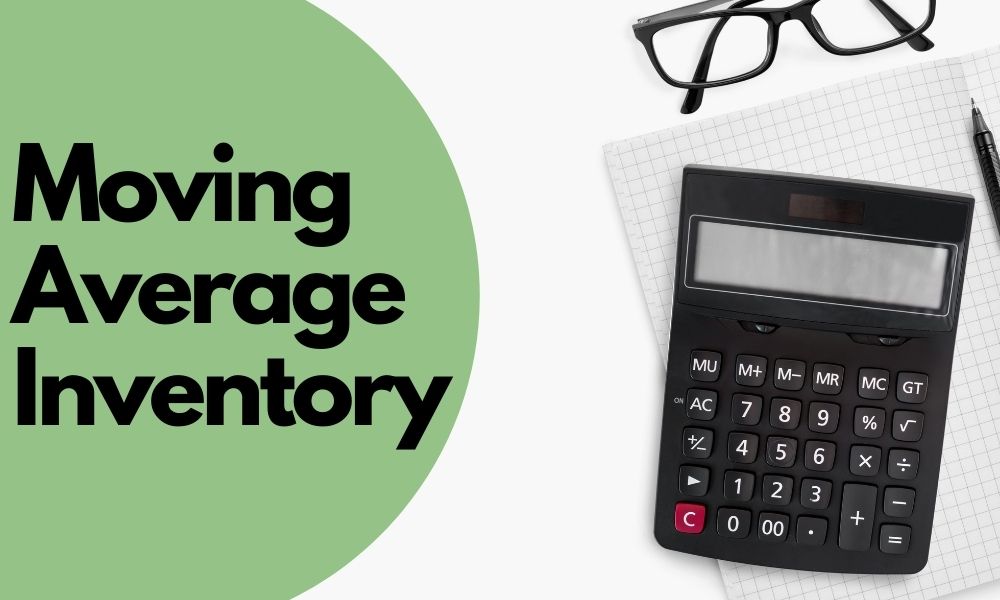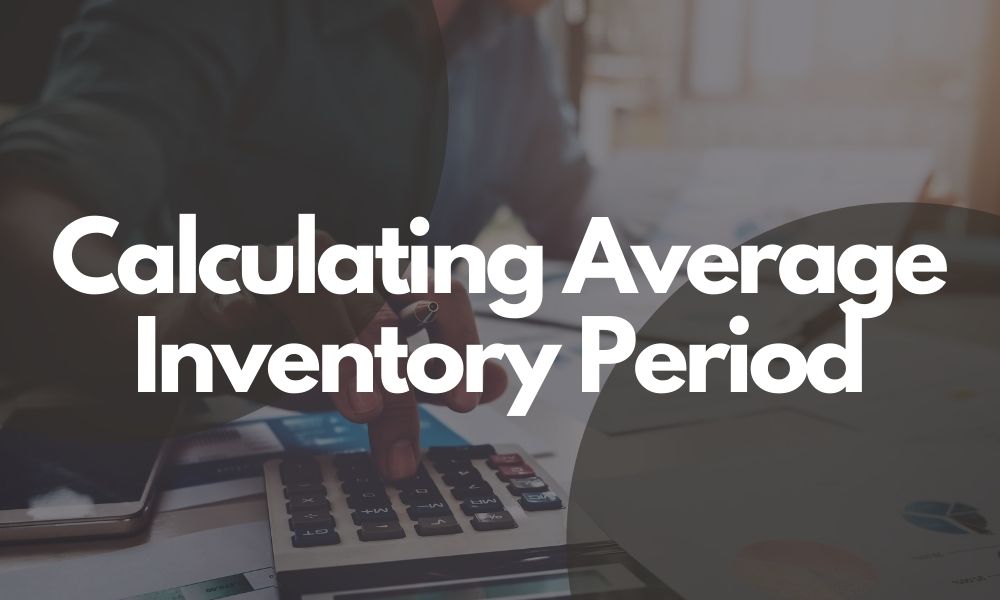How To Calculate Average Inventory

Inventory management is an essential means of managing a business and contributes to managing and maintaining costs. If you want to know more about what average inventory is and how to calculate it, then read further to get a grip on the basics of average inventory.
A business can determine how much inventory it has exhausted over time by calculating average inventory. One common method to calculate Average inventory is to add the beginning stage and the ending stage of the inventory and then divide the total overall by the time period.

Average inventory calculations can be used not only to calculate the average inventory turnover rate and the average inventory period but also to help in determining the average quantity of inventory necessary to support your company’s sales team.
Generally, a high inventory turnover rate suggests healthy sales and high demand for products and services while a low inventory turnover rate suggests that sales are plummeting and therefore inventory needs reviewing and re-evaluation of restocking and discontinuation of the sale of products that are not bringing profit.
From the aspects of retailing to that of manufacturing, inventory management plays a crucial role in everything. Calculating average inventory is an efficient accounting measure as well that tracks any changes in activities made in the course of the process.
You can keep a track of your stock level and manage your retails by calculating your average inventory.
What Is Average Inventory?
Average inventory is the calculative estimation of the inventory proportion or its value that an enterprise possesses over a certain period of time.
Inventory balances can face major fluctuations as well as minor ones depending on how small or large shipments are secured at the end of a month when a surge in the products bought or a peak season is detected that will exhaust the inventory.
The function of an average inventory calculation is to smoothen out such peak spikes evenly and to present a stabilized index of inventory readiness.
What Is Inventory?

Inventory is in general either the raw materials that are to be processed or the end products or the finalized products i.e. the finished goods.
The term inventory indicates the number of products at hand that are ready for sale so that the company can earn profits or the number of raw materials in the hands of the company that will be used to produce the final products that are to be sold off.
Important Factors to Consider
- Average inventory in other words is the average value and quantity of one’s inventory over more than one or two accounting intervals.
- It is the mean estimation of inventory at hand over a certain period of time. The mean value may be or may not be uniform to the median estimation procured from the same data.
- You can derive useful comparisons using average inventory as compared to other files and reports such as when tracking the loss of inventory due to damage and loss or theft etc comparing the average inventory to the total volume of sales proves to be a helpful measure.
Also Read: Top Free Inventory Management Software You Can Use
Importance of Average Inventory
If you receive a massive delivery in the month’s end or if you have been stocking up for a specific sale or perhaps your business is seasonal, for example, seasonal fruits that are only available in summer or winter, in all these situations your inventory may fluctuate. Looking at it using a single point in time will obviously not give a clear scenario of the situation.
While discussing a negotiation with suppliers of the products or when making strategic decisions about how much stock one needs you need to get a proper view of the bigger picture and for that, you have to go through the process thoroughly.
Having a good grasp of terms and methods under inventory management will help you in this case. For funding the bottom line you need to support a specific amount of sales. How much inventory is needed in that case? average inventory will in this case assist you by providing you with an overview of the specified period.
The average inventory is also an essential integrant to understanding how fast you can afford to turn inventory into sales. Days sales of inventory (DSI) and the inventory turnover ratio helps you when you are dealing with these problems.
What is Day Sales Inventory (DSI)?
DSI is the average inventory divided by the Cost of Goods (COG) multiplied by the time period i.e. a year. Therefore,
Day Sales Inventory: Average inventory/COG*365
The profit of any business scan soars higher as low as the DSI gets that is lower the DSI higher the profits. DSI varies from one enterprise to another because there are a variety of industries standing today and each of them uses different kinds of processes to manufacture and sell their products.
What Is Inventory Turnover Ratio?
The inventory turnover ratio in a way can be considered a method using which you can calculate the amount of time that has passed between the time when you are buying the particular inventory and the time when the final end product is released for sale to the markets for your customers to buy them.
You can also check out if the amount of stock you’re holding is too much using this method. When you’re replacing your inventory and moving the goods to be sold off your turnover ratio will remain high but when you do not have enough inventory in your hands to meet the demand of the customers, inventory turnover will indicate the loss you’re incurring.
You can compare your company ratio to that of your competition to get a hold of where you’re excelling or where you’re lacking.
The inventory ratio will be listed on your income statement in general. You need to first start by detecting the cost of goods sold or the COGs and the average inventory which is the measurement of the amount it takes for the manufacturing of your products that may include the goods as well as labor to calculate the inventory turnover ratio.
Inventory turnover can be calculated using the following formula:
Inventory turnover ratio: Cost of goods sold (COGs) / average inventory
Another important component in calculating inventory turnover is DSI or the day sales inventory. The DSI is a measure of the number of days it takes for the inventory to make sales. You’ll need the average inventory again for this formulating DSI’s formula.
Average Inventory Formula and Calculations
You can determine the average inventory for more than one or two accounting time intervals using the formula that is used to calculate the average inventory.
You should keep in mind that this formula can be expanded further to cover protracted periods of time, for example, you can add up the inventory that is procured at the end of every month in a year (365 days) and divide it by 12.
Looking into compact time periods can also help, for example, looking into a period of one month or 30 days, taking the inventory from the month’s beginning and the inventory at the month’s end, and then dividing it by 2.
The formula for calculating average inventory for a shorter timeframe:
Average Inventory: (current inventory + previous inventory) / number of periods
Examples of Average Inventory
Consider the monetary estimation of inventory in the ending months of December, November, and October is $345,000, $248,00 and $210,000, now using the formula to calculate average inventory for the fourth interim that is by adding the monetary estimation of November, December, and October and dividing the overall amount with the number of months will procure the final result.

Ending inventory (December): $3,45,000
Ending inventory (November): $2,48,000
Ending inventory (October): $2,10,000
Total amount: $4,58,000
Average inventory: 458,000 $ / 3 = $1,52,666
You can Calculate the average inventory with regards to the number of units in lieu of monetary value is done using the same method.
Considering a restaurant’s last month’s inventory balance is 50,000 pallets of flour while the inventory balance at present is 30,000 pallets, therefore the average inventory for the two months is the addition of the pallets of flour of both these months that is 50,000 plus 30,000 and the total amount is to be divided by 2 which gives us the desired pallets of flour.
November: 50,000 pallets of flour
December: 30,000 pallets of flour
Total: 80,000 pallets of flour
Average inventory: 80,000/2 = 40,000 pallets of flour
Also Read: Types of GST And All About Them
Moving Average Inventory
The enterprises that use the perpetual inventory method to calculate average inventory experience an incessant real-time record of inventory.

Computerized point-of-sale analysis systems and computerized inventory management software can reflect regulations needed in inventory management right away with the help of sales tracking, inventory restocking, or inventory diminution.
The enterprises that use the perpetual inventory method can utilize a moving average inventory to compare average inventories produced in multiple periods of time. The function of Moving average inventory is to convert the pricing to meet the current criterion of the market so that periods can be compared in a more accurate manner.
Ways to use Average Inventory Results
Calculation of the Average Turnover Ratio
The average turnover ratio is the measure of the period of time it takes to make sales of the inventory after they’re purchased by you is known as the average turnover ratio.
How to Calculate the Average Turnover Ratio?
The average turnover ratio can be calculated by dividing the total ending inventory by the annual cost of goods that have been sold off.
For example, your ending inventory = $45,000, and your cost of goods sold is $60,000. Divide $60,000 by $45,000 and the result is 1.3. Therefore it means that your inventory has been sold one and one-half times during that particular year.
Calculating Average Inventory for the period
It is needed for average inventory to be calculated over at least two time periods. This means that two or more quarters, months, or other time periods can be out on average. Average inventory smoothens the impact of abnormal spikes and drops in inventory which results in better stable measurement and decisions as therefore can be based upon or compared to different metrics.
Drawbacks, Problems, and Challenges Addressing Average Inventory
Average inventory is indeed very useful in inventory management but in spite of that, it does have a few drawbacks:
Seasonal cycles cause inaccuracies
When a company produces a large number of its sales in one specific season, it somehow alters the average inventory and the inventory balances. In general inventory, balances reach abnormally high peaks preceding the seasonal sales spike and then they stoop abnormally low afterward.
Sales quota creates problems
Inventory balances in the month’s end will reflect strongly at the sales quotas and will push to meet the sales quotas in the month’s end. As a result, the month-end inventory levels may drop significantly when they are far below the regular inventory norms as well.
Errors may occur due to estimated balances
Using estimated inventory balances may seem sufficient but to a certain limit. It is not as accurate as using physical isn’t as accurate as utilizing physical counts of inventory.
Accuracy in inventory management can provide a better report and improved and precise forecasting and will also increase profitability.
Calculating Average Inventory Period
Calculating the average inventory period can make use of the inventory turnover ratio in order to determine the amount of time it takes for the products to remain as a part of the inventory before getting sold off.

The average inventory period can be calculated when you divide the number of weeks, months, or days within the time interval by the inventory turnover ratio (time period depends on the frequency one wishes to utilize).
Average inventory period: Time period / Inventory turnover ratio
For example, your annual inventory turnover ratio = 5.0.
To calculate the daily average inventory period you need to divide 365 by 5.0, so the answer, in this case, is 73. This means that the inventory stock is stored in the inventory for an average time period of 73 days.
From this example, you can decipher the situation that indicates that your stock has remained stacked up on your shelf for a long period of time, more than a month. Now, you can compare this result with your potential competitors to interpret whether the period of average inventory is unusual or typical.
If you consider the period of days i.e. 73 days to be high then you need to reevaluate and review the increment or decrement of your sales and manage your inventory more efficiently.

Maximize Your Online Business Potential for just ₹79/month on Lio. Annual plans start at just ₹799.
Conclusion
Average inventory is the key element in the planning of any business. In the planning of sales, average inventory is used to ensure the availability and management of sufficient raw materials and finalized or finished products that are available to meet the requirements of the orders placed on the margin lines.
In other words, inventory management signifies the process of ordering, storing, using, and selling the company’s inventory that is the final product for selling.


















6 Comments
It would be extremely helpful if you could explain how to calculate inventory turnover. Thanks in advance..
Hello Ashwathi,
The inventory turnover ratio can be calculated by dividing the inventory days ratio by 365 and then flipping the ratio.
Hope it is clear for you.
Please provide more information regarding inventory management and the software..Thanks a lot.
Hello Trisha,
Inventory management is critical for any company that keeps goods or raw materials on hand. The need for a labor-intensive and error-prone manual inventory management system has been replaced by modern technology, which historically required manual inventory management.
Inventory management software is a tool that automates aspects of inventory and warehouse management, reducing the time required to track inventory, manage reordering, and update accounting data.
Thank you so much for providing such detailed articles to us all. I literally adore your writing style. Please keep writing.
Hello Rejeena,
Thank you very much for your kind words.
I’m delighted that you found this article interesting and informative.
I’ll definitely write more on pertinent subjects.
Happy reading!